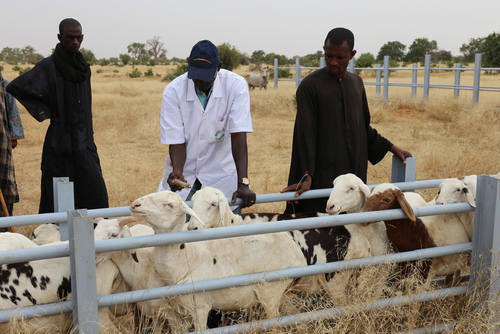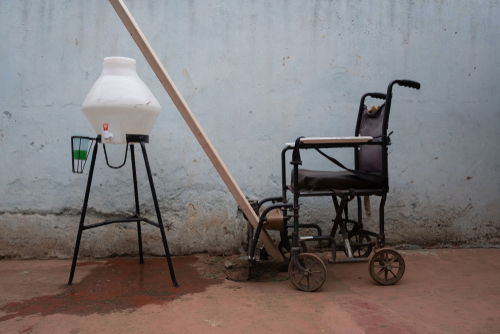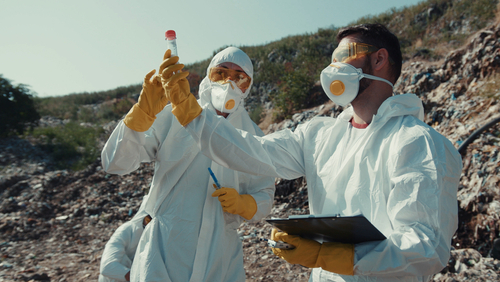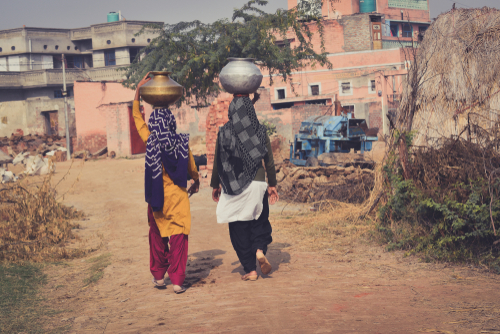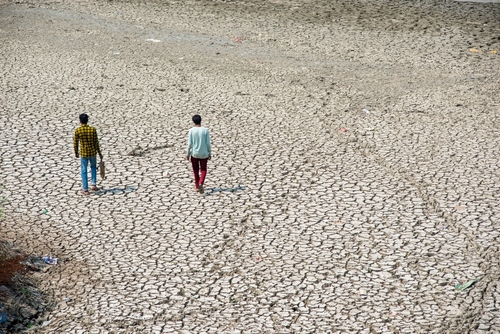January 29, 2024

Reducing COVID-19 transmission among athletes at the Tokyo and Beijing Olympic Games
The COVID-19 pandemic reshaped major events like the Tokyo and Beijing Olympics. OHT’s Dr. Ramanan Laxminarayan and Chirag Kumar and colleagues advised on SARS-CoV-2 testing strategies in the 2021 Tokyo games following modeling research on the effectiveness of various testing scenarios. The recommendation from that work included more frequent testing: Testing athletes daily was projected to reduce total cases of COVID-19 during the Olympic Games by 69 percent, compared to a 25 percent reduction from testing once every four days. The low secondary attack rates (2 percent in Tokyo and 4.4 percent in Beijing) indicate the success of the implemented public health measures in interrupting the forward chain of COVID-19 transmission. Both events proved that with proper risk assessment and communication, mass gatherings are possible during a pandemic, leaving lasting impacts on public health and epidemic preparedness.[The Lancet]
Underdetection of mpox in the United States is a major cause of continued transmission.
OHT’s Nodar Kipshidze and Eili Klein co-authored a study that modeled three possible drivers of continued mpox transmission: 1) underdetection of cases; 2) waning immune protection from vaccination; and 3) waning immune protection from a previous infection. Applying the models to the 2022 mpox outbreaks in Chicago, San Francisco, and New York City, they found that underdetection of cases was the most likely driver of prolonged mpox transmission. The proportion of undetected cases was estimated to be 90 percent in Chicago and San Francisco and 70 percent in New York City. Missed diagnoses likely result from limited mpox surveillance and narrow testing criteria, highlighting an opportunity for wastewater surveillance to complement existing monitoring efforts. [Nature Portfolio]
Trends in antibiotic prescriptions in Indian tertiary care facilities
A government report of India’s first multicentric study on antibiotic use shows that over half of antibiotics prescribed in India have the potential to develop resistance. Over a 5 year period, 71.9 percent of patients in 20 Indian tertiary care facilities were prescribed antibiotics, with nearly 5 percent of these patients receiving 4 or more antibiotics. Furthermore, “Watch” antibiotics, which are considered to have a high potential for resistance under the WHO AWaRe (Access, Watch, Reserve) classification, were more frequently prescribed (57 percent) than “Access” antibiotics (38 percent), which have a lower risk for resistance and are recommended for most infections. [The Print]
Measles outbreaks and civil unrest are weakly linked in central Africa.
Researchers assessed the relationship between disease outbreaks and civil unrest in four central African countries (Chad, Cameroon, Central African Republic, and Congo) between 1996 and 2005. Chad and Cameroon, which experienced measles outbreaks in 2001, had a statistically insignificant decrease in civil unrest after 2001. The Central African Republic and Congo, which did not experience measles outbreaks during the study period, had a marked increase in civil unrest from 2001. The finding of a weak relationship between disease outbreaks and a decrease in civil unrest contradicts previous literature, which suggests that disease outbreaks result in increased civil unrest. The discrepancies could be explained by infection-driven social distancing, which may have reduced interpersonal tensions and a lower chance of conflict. [Politics and the Life Sciences]
An HIV test-and-treat intervention reduced TB risk in men in Uganda.
A sub-study within a cluster-randomized trial aimed to determine the impact of an HIV test-and-treat intervention on the population-level incidence of tuberculosis (TB) infection in rural Uganda. Compared to the baseline prevalence of latent TB (24 percent in the intervention arm and 23 percent in the control arm), the intervention reduced the risk of incident TB by 27 percent (adjusted risk ratio [aRR]: 0.73; 95% CI: 0.57-0.92). [Clinical Infectious Diseases]
Air quality interventions could reduce premature mortality in Australia.
A health impact assessment measured the burden of mortality attributable to fine particulate matter (PM2.5) exposure in Australian capital cities frequently experiencing extreme air pollution events such as bushfires and dust storms between 2001 and 2020. Over the 20-year period, 1,454 premature deaths (95% CI: 987-1920) were attributed to exceptional pollution events, with the highest annual death count (72) observed in Sydney in 2019. Nearly one-third of the deaths caused by extreme air pollution events could be prevented by a five percent reduction in PM2.5 levels on exceptional pollution days, highlighting the need for widespread land use changes and air quality management. [Heliyon]
Novel oral polio vaccine type 2 is well-tolerated and immunogenic in young children in Gambia.
An observational cohort study conducted in Gambia found that the first and second doses of the novel oral polio vaccine type 2 (nOPV2) were well tolerated among children aged 6 weeks to 59 months. The rate of nOPV2 seroconversion increased after participants (who were seronegative at baseline) received both vaccine doses; 70 percent of participants (95% CI: 62-78%) developed antibodies after the first dose and 91 percent (95% CI: 81-91%) after the second dose. These findings support the licensure and WHO prequalification of nOPV2 in response to outbreaks of circulating poliovirus type 2 resulting from use of the Sabin monovalent oral poliovirus type 2 vaccine. [The Lancet Infectious Diseases]
COVID-19 vaccine infrastructure can be utilized to increase measles vaccination coverage in Nepal.
Despite setting a goal to eliminate measles by 2023, Nepal faced an outbreak of measles that resulted in 1,013 cases between January and August 2023 attributable to inadequate vaccination coverage and barriers to healthcare access. The COVID-19 pandemic further challenged population-level measles vaccinations in Nepal due to an upsurge in vaccine hesitancy and changes in health-seeking behaviors, particularly in remote and disadvantaged communities. In addition to school vaccine mandates and global collaboration, infrastructure and interventions developed for COVID-19 vaccination efforts should also be leveraged in Nepal’s campaign to eradicate measles. [BMC Tropical Medicine and Health]
Age-specific variations in malaria control interventions in countries affected by conflict
In a scoping review, researchers mapped current interventions for malaria prevention in fragile and conflict-affected states (FCAS), which experience a heightened burden of malaria due to limited health infrastructure, forced population displacement, and a rise in sales of counterfeit antimalarial drugs. This scoping review evaluated 62 malaria control intervention trials conducted across FCAS between 1998 and 2023. Although scaled-up interventions have remained despite ongoing conflicts, the burden of malaria in these countries remains persistently high. The findings underscore the importance of continuous research to assess the effectiveness and impact of interventions to inform contextually relevant policies and mitigation strategies. [Journal of Epidemiology and Global Health]
Near-to-patient testing for STIs decreased inappropriate antibiotic prescribing.
An assessment of the impact of near-to-patient testing (NPT) for sexually transmitted infections (STIs) in Melbourne between March and December 2021 found that NPT improved both antibiotic use and partner notification. Appropriate antibiotic treatment was received by 80.9 percent (95% CI: 76.0-85.1%) of patients who underwent NPT for an STI syndrome compared to 33.0 patients in the control group (27.7-38.6%). Furthermore, over half of patients with an STI who underwent NPT responded to a text message notification of their positive test result, of which 95.2 percent stated that they notified some or all sexual partners of their result. [The Lancet Regional – Western Pacific]
Image from Shutterstock

